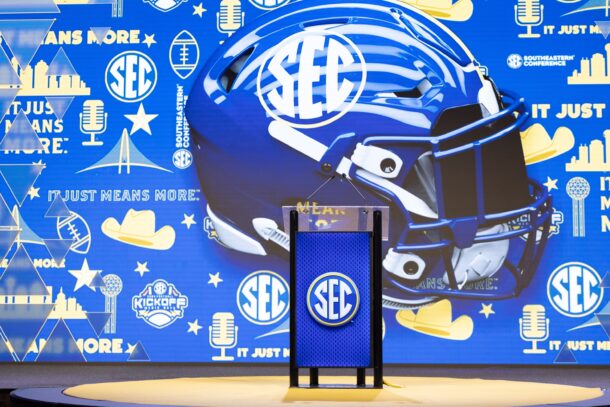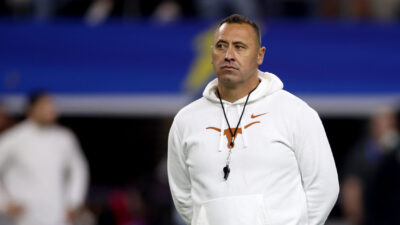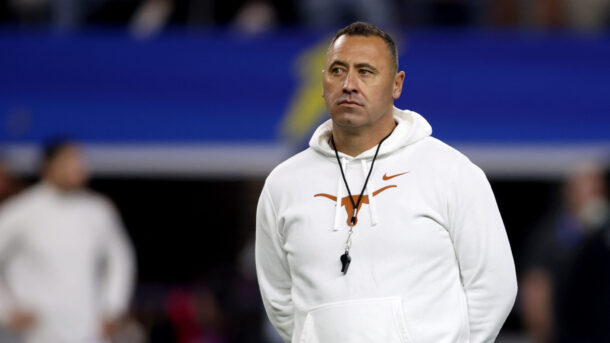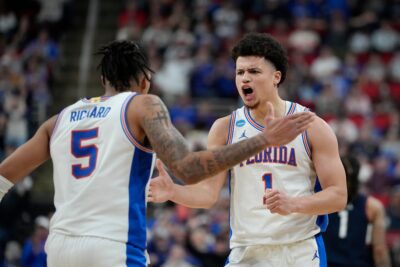Ad Disclosure
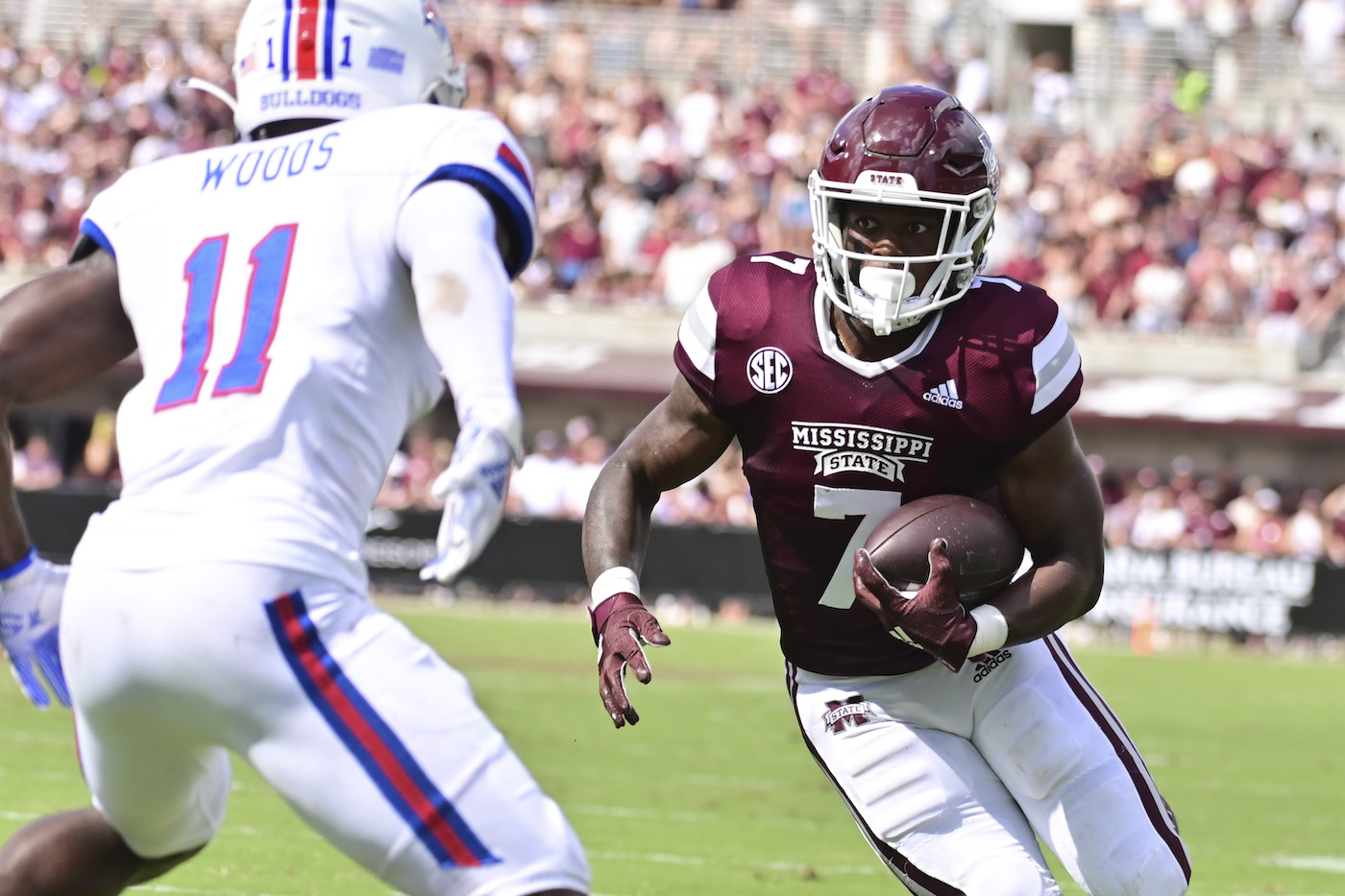
Mississippi State football: 5 areas where the Bulldogs will be better … and worse in 2023
By Les East
Published:
Mississippi State returns the majority of its offensive starters from last season.
It doesn’t return as many starters on defense.
Things will be different on both sides of the ball.
If the Bulldogs are going to improve on their record from last season (9-4 overall, 4-4 in the SEC), the areas in which they improve are going to have to outweigh the areas in which they aren’t as good.
That’s the way this thing works.
This team is different than last year’s, the schedule is different, and the strengths and weaknesses won’t be exactly the same.
Here are 5 areas where Mississippi State will be better … and worse … in 2023:
5 areas the Bulldogs will be better
1. Place-kicking
The Bulldogs had the worst PAT percentage in the SEC last season (91.8) after missing 4 tries, and their field-goal percentage was 10th (70.6).
They brought in UCLA transfer Nick Barr-Mira to fix that. Barr-Mira wasn’t great with the Bruins, but he was consistent, and a continuation of that performance will provide an upgrade for State.
Barr-Mira made 15 of 21 field goals last season, 14 of 21 in 2021 and 6 of 7 in 2020. On top of that, over the course of 3 seasons he missed just 3 PATs in 146 attempts, 1 fewer miss than the Bulldogs had in 49 attempts last season.
The kicking will be better and that could make a difference against a typically competitive SEC schedule.
2. Rushing offense
It’s no secret that the Bulldogs plan to be more balanced under new offensive coordinator Kevin Barbay than they were under former head coach/offensive coordinator Mike Leach.
The addition of more planned rushes — and quite possibly significantly more — will mean greater productivity from a running game that was last in the SEC in yards per game (81.7) and 2nd-to-last in yards per attempt (3.6).
State not only will run the ball more often, but it will run it more effectively.
If it doesn’t, then the offense will have a problem.
3. Punting
The Bulldogs were 11th in the SEC last season with an average of 40.2 yards per punt.
They’ll be significantly better this season.
Graduate student and transfer Andrew Osteen, who averaged 42.2 yards (2nd-best in UCF history) in 50 career games, and freshman Keelan Crimmins from Melbourne, Australia, could share the position or 1 may earn it outright.
In any event, there will be improvement.
4. Scoring defense
State allowed 23.1 points per game last season, which was 7th in the SEC.
That came against a schedule that included eventual national champion Georgia, which had the highest-scoring game against State (45-19). This year, Georgia gives way to South Carolina on the schedule.
The absence of Georgia will help hold down the points allowed, but the return of key players such as linemen Nathan Pickering and Jaden Crumedy as well as linebackers Nathaniel Watson and Jett Johnson will be a key factor in reducing the points allowed.
5. Yards per pass attempt
The signature element of Leach’s teams was the Air Raid offense, which meant lots and lots of passes, lots and lots of completions and lots and lots of passing yards.
But State didn’t pass the ball down the field nearly as much as Barbay plans to. As a result, the Bulldogs averaged a mere 6.4 yards per pass last season.
The increased emphasis on the running game might lead to fewer total passing yards, but the average gain will be greater.
5 areas the Bulldogs will be worse
1. Kickoff returns
The Bulldogs were really good at returning kickoffs last season, thanks in large part to Lideatrick Griffin.
And they’ll be good again with Griffin leading the way.
But it won’t be surprising if they have a drop-off from last season, when they led the SEC with an average of 26.9 yards per return.
Opponents will be even more aware than they were a year ago of Griffin’s ability to hurt them and will kick away from him even more.
When Griffin has opportunities to return kicks he’ll again be among the best in the country. But those opportunities might not come as frequently.
2. Takeaways
State was among the best in the SEC at taking the ball away last season, tying for 1st at 1.8 per game.
But it’s difficult to see how the Bulldogs don’t have fewer takeaways, if only because of the departure to the NFL of cornerback Emmanuel Forbes (6 interceptions, including 3 pick-6s).
3. Pass completion percentage
As was noted earlier, the new offense will feature more runs, fewer passes and a greater emphasis on passes down the field.
The passes down the field inherently bring a greater degree of difficulty, which will inevitably lead to a lower completion percentage.
4. Turnovers
Sticking with that theme, the greater degree of difficulty will lead to more interceptions.
Will Rogers is a smart and experienced quarterback, and he’ll make good decisions. But even good decisions can lead to bad outcomes when the throws are more challenging.
The increase in turnovers won’t be huge, and Rogers will still be very good.
But the increased rewards in the passing game will be balanced by an increased risk.
5. Passing touchdowns
The increased emphasis on running the ball will mean fewer clock stoppages and, ultimately, fewer plays run.
Additionally, the sharper running game will be utilized more frequently in the red zone, allowing the runners to poach a few scores from the passing game.
The passing game will still be very good, but the running game will be more productive.
The offense will remain very good, but the strengths and weaknesses of the offense won’t be exactly the same as last season.
Just like the rest of the team.
Les East is a New Orleans-based football writer who covers LSU for SaturdayDownSouth.com. Follow him on Twitter @Les_East.
